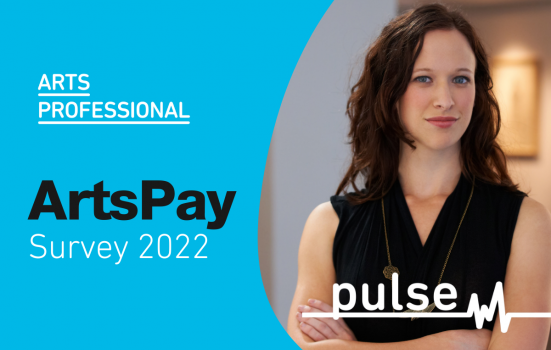Survey suggests pay inequality between men and women is decreasing, but comparisons with 2018 data suggest that some wage increases could represent real-terms cuts.

The gender pay gap in the arts is closing, according to the 2022 ArtsPay survey.
Figures from the online survey, which received more than 2,000 responses in total, show the median salary of 651 full-time female workers to be £33,000, compared with £34,187 for full-time male workers (based on 208 responses).
This represent a gender pay gap of 3.5%, down from 10.6% in the 2018 survey.
READ MORE:
Although the general trend would suggest the gender pay gap is closing, anecdotal evidence indicates the problem persists in parts of the sector. One respondent said there is a gender pay gap favouring men in their organisation, despite female colleagues being more experienced.
“When challenged regarding pay discrepancies, the organisation I work for has blamed the board for an inability to address the pay gap. Staff were also given an increase below inflation which equates to a real-terms pay cut.”
Another respondent said they are used to seeing men promoted quicker: “The men at this [place of work] and at previous employers are consistently promoted faster and with less experience or qualifications than the women, who are told they lack the experience needed, but have more than the men who have been promoted”.
The survey found gender parity between part-time workers. The median salary for both the 220 female respondents and 37 male respondents that work part-time was £30,000.
Results from freelancers are harder to draw conclusions from, due to the widely varied nature of people’s freelance responsibilities. The 159 female freelancers had a median salary of £20,000 compared with £25,000 from 38 freelance men, equating to a gender pay gap of 20%.
Increases against inflation
Compared with 2018 figures, the median salary increased by 12.5% (£3,622) for full-time female workers and by 6.6% (£2,143) for full-time male workers.
Between the last ArtsPay survey in 2018 and March 2022 – the end of the last financial year that ArtsPay 2022 findings are based on – inflation rose by 10.5%. With inflation projected to rise to 13% in October, these average increases could actually represent a real-terms pay cut for some workers.
Many respondents raised concerns over the increased cost of living and relative lack of wage progression.
One theatre worker said: “We are struggling to attract and develop new casuals and crew when casual rates are minimum wage. The industry is exploiting people's love and passion for theatre [and] I am seeing more burn out of staff or swapping careers as the passion dwindles due to work life balance and poor pay.”
“You can get a better quality of life and more money working at Tesco.”
Another respondent noted that the arts sector is “really going to struggle” to keep salaries in line with higher inflation rates.
“Arts salaries will continue to lag yet farther behind, making the sector less and less attractive to people thinking of entering the profession. It is already clear with recent recruitments that applicant numbers are down [by] a lot,” they said.
Largest salary jumps
The increase in median pay of female full-time workers appears largely driven by rises in entry-level salaries.
Respondents to the ArtsPay survey were asked to specify if they worked an entry, middle or senior level role. The median salary of women working in entry level roles saw a 14.9% increase in 2022 against 2018, compared with a 1.8% increase in the average salary of medium level roles and a 7.5% increase among senior level roles.
The results also show a larger percentage of women working in higher paid roles than in 2018. Results from the 2018 survey found 18% of women were earning more than £40,000 a year, compared with 29% of men. This year, 33% of women said they were earning more than £40,000, compared with 36% of men.
This article is part of a series on findings from the 2022 ArtsPay survey. Findings based on further analysis will be published in the coming weeks.




